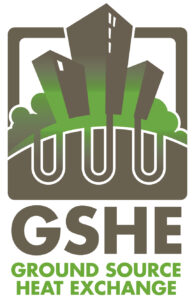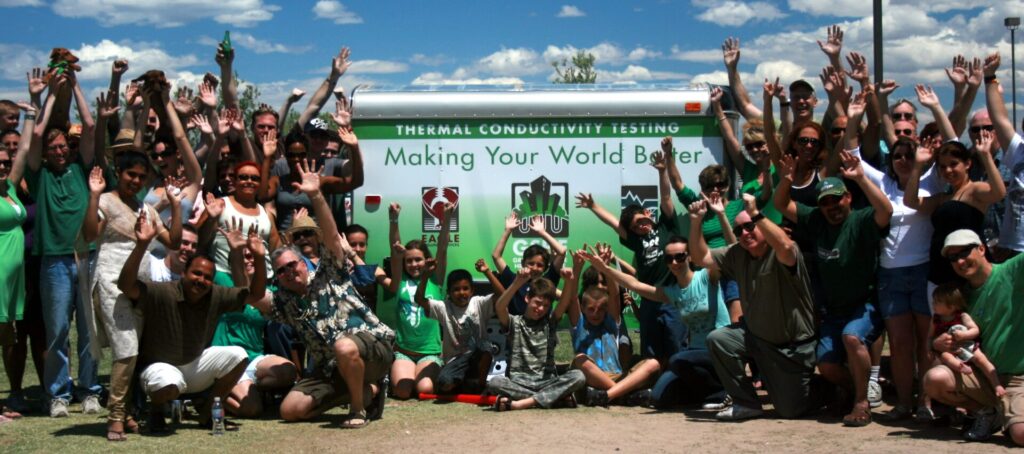Ground source heat exchange
Just a few feet underground the temperature of the earth is remarkably stable. In Nevada that temperature ranges from the 50’s to 80’s Fahrenheit. A GSHE system takes advantage of the stable ground temperatures to heat your building in the winter and cool your building in the summer.
A GSHE system uses less electricity than a standard electric heating and cooling system. These systems often have a life cycle up to two times longer than the conventional furnace and air conditioner and also operate much quieter.
You may be asking yourself what GES and Eagle Drilling Services (Eagle) has to do with GSHE? GES performs thermal conductivity testing (TCT) in test borings drilled by Eagle to help determine if GSHE is right for your project and to help mechanical designers size a GSHE system for your building. The TCT captures the combined effects of various parameters that affect the heat transfer performance of the ground formation, such as the thermal conductivities of different soils and rocks along the depth of the borehole.
Once it’s determined GSHE is a viable option for your project, installation is relatively simple and is where GES’ sister company Eagle Drilling Services (Eagle) plays a larger role in GSHE. Utilizing a sonic or mud rotary drill rig, Eagle bores holes to various depths, typically 400 to 500 feet deep, and places a looped tube within the borehole. The loop is held in place by a special thermal grout and connected to the buildings HVAC system.
Once installed and filled with a circulating fluid, heat from the earth warms your building in the winter and in the summer the heat inside your building is exchanged for the cooler temperatures below.
As the cost of natural gas and electricity continually rises over time, so does the cost of heating and cooling a home or office. Government buildings, including airports, are looking at these systems like never before. These buildings can have life spans lasting nearly half a century. Imagine the savings on heating and cooling system costs over that time.
Geothermal energy is considered one of the most efficient and sustainable types of energy. Because it’s a clean, reliable, and renewable resource, the federal government is offering tax incentives to offset what can sometimes be high installation costs. As part of the Inflation Reduction Act, the purchase and installation of the system now includes a thirty percent tax credit for the installation costs. The tax credit has no limit, so your system could be significant, and the credit will apply to all of it. But the credit won’t last forever. It’s set to expire in 2034.
If you are interested in a GSHE for your project, please contact [email protected].


